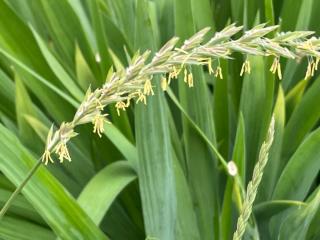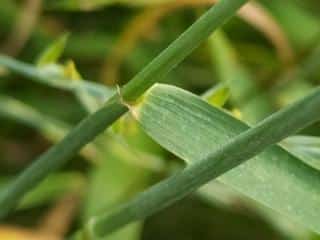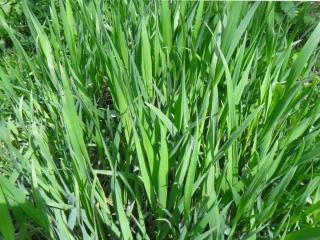

Among the weeds that invade flowerbeds, lawns, or vegetable gardens, quackgrass (Agropyron repens or Elymus repens) is surely one of the toughest. The reason why couch grass (another name for it) always comes back is because it’s not uprooted properly. Here are all our tips for removing quack grass and preventing its return.
For further reading:
Surely, couch grass is a weed or bad plant. But it is also a perennial herbaceous plant with rhizomes that grows everywhere in the world, at all altitudes, and in all climates. In a nutshell, it’s very tough and highly invasive.

It gets another of its common names, dog grass, from the shape of its rhizomes that look like dog’s teeth.
It’s not always easy to recognize couch grass, in the lawn or flowerbeds, since it looks just like… grass!

As for the stems, they are straight, and bear flat spikes, composed of spikelets, which bloom in June and July. Couch grass produces seeds that don’t really germinate very easily… but this grass definitely manages in other ways!
Usual weed-killing tricks always backfire when dealing with quackgrass. Indeed, in terms of weeding, couch grass should receive special treatment. And certain habits should be forgotten to get rid of this weed:
As for mulching, though effective in preventing the spread of many weeds, won’t work for couch grass. Indeed, its perennial nature allows it to survive while annuals cannot germinate and grow due to mulching.
First off, let’s clarify one thing: getting rid of quackgrass will make you break a sweat. This weed is tenacious!
 Step 1: weed with a spading fork or a broadfork. To reach deep rhizomes, you need to loosen the soil up without tearing roots. These tools lift the root clump up as a whole, and all that remains is to pull it out by grabbing the collar or root crown. Perform such weeding in fall, when soil is softer. You’ll have to do the same thing in the lawn.
Step 1: weed with a spading fork or a broadfork. To reach deep rhizomes, you need to loosen the soil up without tearing roots. These tools lift the root clump up as a whole, and all that remains is to pull it out by grabbing the collar or root crown. Perform such weeding in fall, when soil is softer. You’ll have to do the same thing in the lawn.The tips and tricks we mention hereafter are purely for the sake of completeness, because their effectiveness has never yet been formally proven. But many say they seem to work.
Here goes! Planting French marigold (Tagetes) is said to be effective against quackgrass. French marigold roots seem to have a repellent effect on this invasive grass, as do the roots of common marigold (calendula), and possibly those of nasturtium.